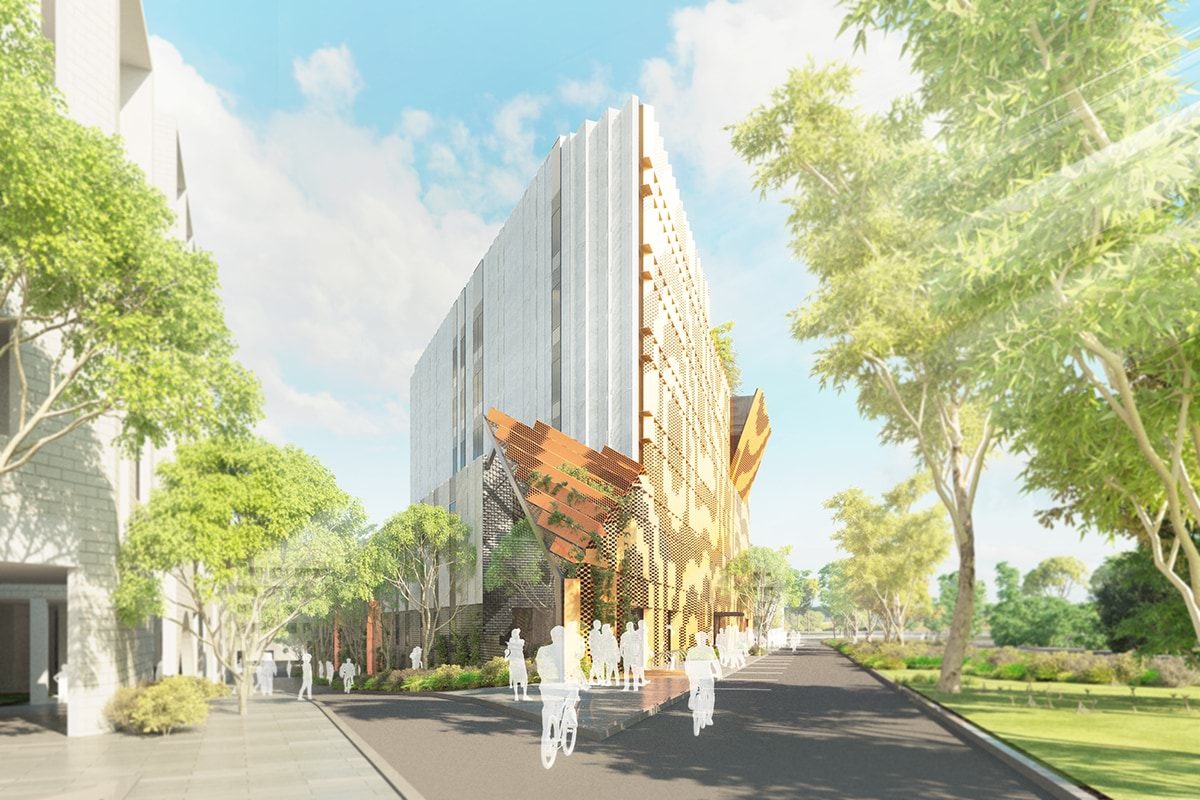
An artist’s impression of the new North Melbourne Primary School campus. Image: Victorian Government.
It’s been five years since concerns about overcrowding in Inner North schools prompted the ACT Council of P&C Associations to suggest the government look at vertical or multi-storey facilities where land was scarce and costly.
In that time, the Inner North’s population, especially along the Northbourne corridor, has boomed, as has the ACT’s town centres – particularly Belconnen and Woden, whose evolving skylines show that many of us, including families, have adopted high-density living.
But there has been barely a word of how the government will meet the educational needs of these new communities.
Last year, the Molonglo Valley Community Forum, worried about how much community land the proposed school and college in the planned group centre would gobble up, called on the government – in vain – to consider building up rather than out.
Now housing advocacy group Greater Canberra has put the issue firmly on the agenda with its submission to an Assembly committee’s schools infrastructure inquiry.
It says a combination of government policy, convenience and, importantly, affordability, is driving families or couples planning to have children into town centres or along transport corridors. This will only gather pace.
The logical solution is to go up, something that has already been done in other jurisdictions and around the world.
Government cannot support this residential intensification and not expect to provide schooling for the inhabitants’ children, or expect parents, those who have cars, to drive them out of their communities, or young students to negotiate the busy main roads that usually surround them.
As P&C Council spokesperson Janelle Keenan says, schools can anchor communities and parents like them nearby.
It is understandable why the traditional layout of schools in a suburban setting has such a hold on many people’s psyches. For most of us, our schools were lucky to reach three storeys, let alone 10, and were connected to playing fields of some sort.
The notion of children learning and playing in a high-rise environment could be tough sell.

Education Minister Yvette Berry: vertical schools are something for the future. Photo: Michelle Kroll.
But while most of our schools will still be of low-rise, flat design, the vertical schools in other capitals such as Melbourne, where there are already seven operating and an eighth soon to open, offer models for Canberra’s high-density areas and should allay parents’ fears of a lifeless environment.
For example, the new five-level North Melbourne school campus for prep to Year 2 has an extensive landscaped outdoor play and learning area including a kitchen garden, as well as a basketball court and gymnasium.
It will offer multiple learning spaces, breakout areas, staff and meeting spaces across four levels, including the kindergarten with outdoor play areas on level 5.
Victoria’s first vertical campus is the six-storey South Melbourne Primary School, which opened in 2018 and was designed to be embedded in its neighbourhood.
Key features include indoor and outdoor learning spaces; a vertical piazza; ‘learning neighbourhood areas’, such as shared kitchens, studios and reading lounges; an external play area on level 5; video and conference rooms; a food hub; indoor and outdoor sports courts; a library/interactive learning centre and gym.
Many facilities are also shared by the community.
The point is that with clever design, the vertical campus should be able to provide positive learning experiences for children close to where they live.
But Education Minister Yvette Berry remains cautious about the idea.
Asked if the Education Directorate was forecasting for a future when land supply was much tighter, she said it wasn’t yet on the radar.
Vertical schools were something the government would have to consider in the future, but the idea would likely be more suitable for high schools or colleges.
She told Budget estimates in September that vertical schools would be considered in areas like the city where there were land supply constraints, “but we also want to ensure our new schools have what they need to have a great learning experience”.
That reveals a certain bias and, if you think about the pace of high-density growth driven by the government’s own policies, short-sightedness.
The government should plan for this, identify and secure land and investigate designs well before the need becomes pressing.





















